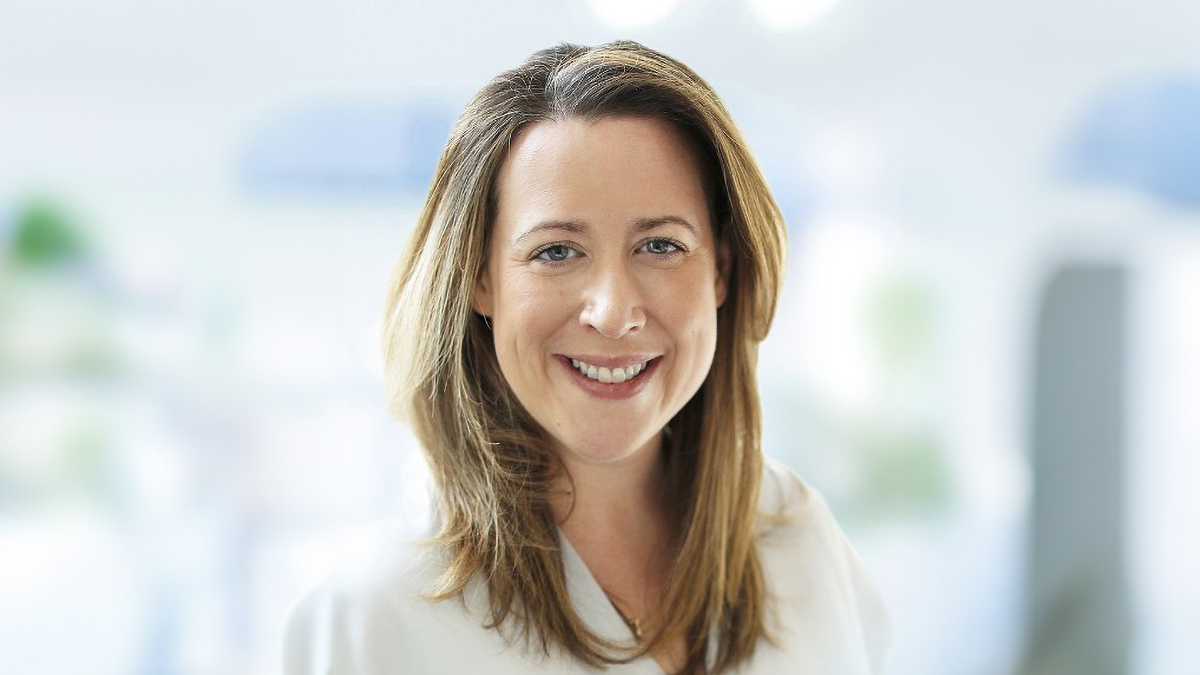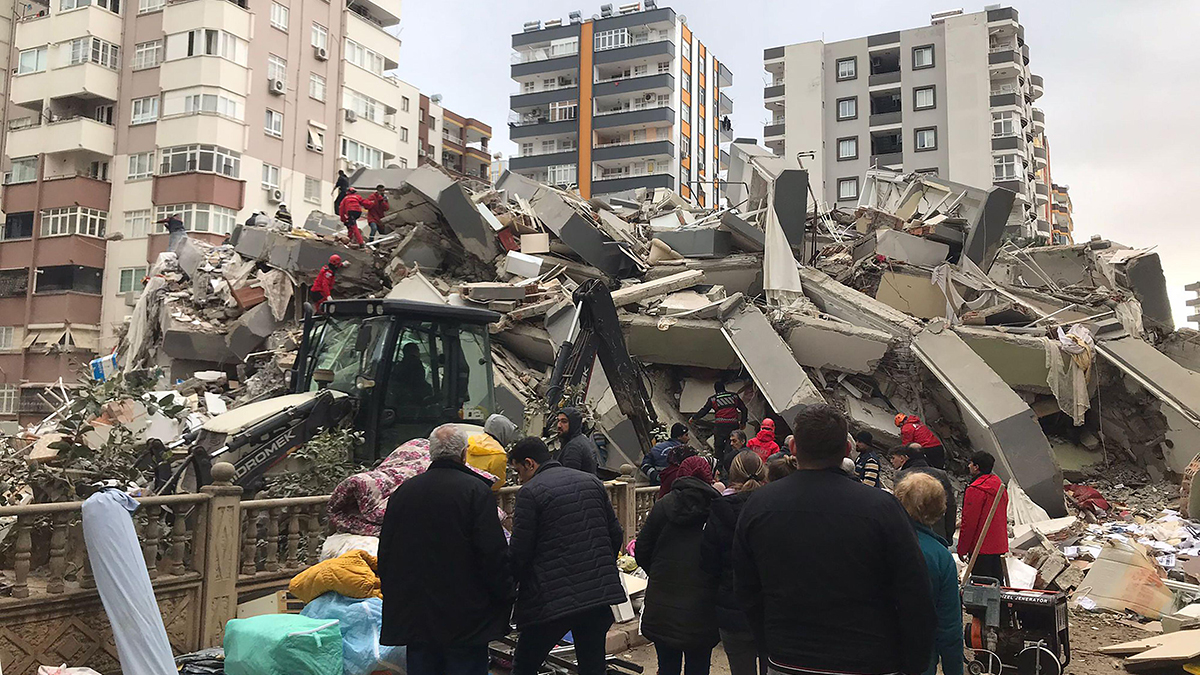Climate should be in every conversation about risk: Aon's Henderson
Liz Henderson describes how the broking giant will measure the success of its approach to climate risk
Just as they faced ‘silent cyber’, re/insurers must be alert to ‘silent climate’, Aon’s global head of climate risk advisory warns
The essential factor behind the tool Aon recently launched to help its clients visualise and understand their exposures to physical climate risk is it is “in the hands” of each of its brokers, according to the company’s global head of climate risk advisory.
Climate Risk Monitor (CRM) assesses an organisation’s present and future exposures to key chronic risks – drought, extreme rainfall, extreme heat, freeze and wildfire – under different climate change scenarios, providing diagnostic reports on individual asset and portfolio impact, as well as geographical visualisations.
In an interview with Insurance Day, Liz Henderson stresses the CRM will be applied to every product line in the broker’s ambit.
“Climate change is essential to every conversation our colleagues are having with a client about risk and this tool will be in all our brokers’ hands as part of their day-to-day work. The success of the CRM will be when I can go to any part of the world and find our brokers and clients are making better decisions about their business through that climate lens,” Henderson says.
The CRM is Aon’s first release of a specifically climate-focused tool that looks at chronic perils over a long time horizon and it is global. This enables the broker to add data to its “suite of capabilities” in a way that is “additive to the perils” it models.
“This opens up the conversation to a wider audience of our clients and helps them begin to know what they are exposed to in terms of climate adaptation and resilience, then to understand how that’s going to change over time,” Henderson says. “It means really digging into loss control, risk engineering, asset resilient investment, those types of services we’re able to unlock with an initial conversation that is data-driven.”
‘End-to-end partnership’
The most important way Aon is investing in adaptation and resilience, Henderson continues, is by forming a team that brings together its risk capital colleagues spanning reinsurance and commercial risk – who are close to the insureds – and its risk engineers, who have in-depth knowledge on the ground. This “end-to-end partnership” helps the broker “expand the conversation into parts of the world where there hasn’t been access to great data”, she says, and also into insurance for humanitarian causes by creating solutions for underserved communities.
The team launched last year but began the process of working together four years ago, when Aon first started talking “more specifically and practically” to financial institutions about their climate-related risks. This tool will be part of a client’s platform, among its Aon “suite of capabilities”.
Henderson says: “Our clients are on a journey where they’re first trying to get their arms around climate as an entirely new class of risk. Financial institutions are excellent at understanding credit risk and investment-related risks, but climate-related risk is a new data set and a new way of thinking for them. The most sophisticated banks have made investments in data, modelling and teams of people to help them to assess this risk, but mid-sized and small institutions need access to this data as well and this tool is the first step to giving them the information they need to understand this class of risk in their portfolio.”
This journey is not new for re/insurers, Henderson says. “Finding solutions for resilience is in our DNA as an industry that understands how to quantify and transfer risk and we have helped make developed economies safer and more resilient over time. That knowledge can be translated into broader infrastructure investments, especially in the developing world where the insurance markets are not as sophisticated and where the benefit of having a risk-minded partner in their economy has been missing.”
“Finding solutions for resilience is in our DNA as an industry that understands how to quantify and transfer risk and we have helped make developed economies safer and more resilient over time. That knowledge can be translated into broader infrastructure investments, especially in the developing world where the insurance markets are not as sophisticated”
Liz Henderson
Aon
Aon is also working on how to model hail to support developers of solar plants. “A lot of the solar project developers in Texas, for example, were using about two years of data to decide if hail was going to happen or not. Anyone who works in modelling will tell you two years of information is completely wrong if you’re trying to do site selection for hail-related risks,” she says.
“We can help those project owners make better decisions just by showing them the full model output of hail, where the events can occur and how extreme they can be. Even if they still decide to build there, they’ll be baking that risk into their costs and their project estimates, which will help them to navigate potential volatility.”
Bringing its risk capital and risk engineering teams together, Aon is creating a model of hail risk to a polygon solar field, instead of a single house, which is what most catastrophe models are limited to. The broker is also working with underwriters to help them embed that view of risk into their pricing.
“We’re in the early days of that project, but we’re getting so much interest from insurers because it’s a perfect example of bringing all our insight, data and analytics together to fill a gap in the market,” Henderson says.
Insurance and finance “make the economy happen”, Henderson stresses, and both are needed to get an energy project off the ground. “The Inflation Reduction Act in the US offers more than $370bn in tax incentives for investment in clean energy and the insurance industry is ready to build capacity and product to support that investment, but I don’t see it happening at scale quickly enough.”
New clean energy technologies carry risks and so insurers need to “get creative and innovative” to address the concerns of investors to unlock the investment that is needed. This creativity could take the form of, for example, technology performance guarantees, revenue swaps, intellectual property insurance products and parametric solutions. “There’s so much we can do. It just requires a focus and an investment in talent, skills and data to meet that demand.”
Parametric potential
A form of innovation that can help unlock investment in clean energy projects is parametric insurance. At Cop28 last year, Henderson noticed a theme emerging of the difficulty indemnity insurance poses to financial institutions.
She says: “A client at a financial institution explained to us the time it takes for a traditional insurance policy to pay out makes it very difficult for a project to pass its risk control criteria. Indemnity insurance products don’t help move a project from non-bankable to bankable, so we have to get creative. Parametric insurance has been the Cinderella of the ball for a decade, but now it can be a solution to addressing that specific problem.”
Although re/insurers are “still better positioned than anyone else” on climate risk, a “reckoning is coming” on how climate change is affecting extreme weather events,” Henderson says. Managing the risks posed by natural catastrophes as solvency-impacting events are “super critical to a healthy industry”, but recent years have shown climate change can affect losses in ways that are not as big and extreme. Instead, these losses are “hidden in the earnings” on re/insurance balance sheets, she adds.
 Chronic perils like heat stress are not captured in today’s catastrophe models
Guy Corbishley/Alamy Stock Photo
Chronic perils like heat stress are not captured in today’s catastrophe models
Guy Corbishley/Alamy Stock Photo
“It’s really important for the industry to understand and isolate how those trends are impacting their overall loss outcome. The blind spot is around chronic perils, like heat stress and extreme precipitation, which are not captured in catastrophe models and are not event-based, but that start to erode the value of properties, impact people’s lives and their insurance policies,” Henderson says.
There is also the challenge of understanding climate risk in terms of the transition to net zero, she continues, because the industry’s focus is traditionally on physical risk. “There’s a lack of information and data regarding how new energy technologies and systems are going to affect our overall risk environment. There are also casualty-related risks to the life, health and workers’ compensation lines of business.”
Climate data transparency is extremely important, she continues, especially for non-physical risks, especially since companies are being asked to self-report on the transition disclosure requirements, meaning the onus is on the organisation itself to assess if a risk is material or not and thus whether it even has to disclose it.
Problems with self-reporting
Self-reporting creates a significant amount of uncertainty in the data for investors and insurers, and there has been a huge push on them from activists to look at their financed and insured emissions.
“A lot of re/insurers struggle to be able to say what’s in their underwriting portfolio from an emissions standpoint. If it’s an oil and gas refinery, that’s probably pretty easy, but it’s much more complicated with insureds in manufacturing and retail businesses,” Henderson says. “I think there’ll be a real push in the next couple of years in getting access to better, more reliable information to be able to assess what their exposure is,” she says.
“There have been so many start-ups providing climate data and transition-related data for the physical risks space, but the pure ability to look at a portfolio and deduce credible, reliable asset-level information about emissions and the transition really doesn’t exist yet. But once an insurable asset is tied to that kind of data and information then the insurance industry will be able to lean in and puts its stamp on a project,” Henderson adds.
Aon is working on a product for the voluntary carbon offset market, which Henderson says is “where the true opportunity lies” for non-regulated oil and gas companies.
The firm is looking at ways to create an insurance product that gives a purchaser of a carbon offset confidence its project is getting the right kind of auditing and servicing and calculations are standardised in how a credit is valued. This equates to financial protection that should create a stronger and more resilient carbon offset market, Henderson says, with better projects coming through and more confident buyers.
“Oftentimes, when you’re in the room with people who operate in the carbon offset space, it’s like they’ve forgotten insurers exist, but we’re starting to see underwriters who really want to focus on that market and create bespoke products for it, which will lead to a more stable market.”
‘Silent climate’ challenges
Just as re/insurers faced “silent cyber”, they are now grappling with “silent climate”. A good example of this, Henderson highlights, is the commitments energy companies, financial institutions and insurers have made to becoming net zero. These have the potential to be retracted with a change of chief executive or a change to the geopolitical environment.
“There’s a growing movement to hold the company boards accountable to those past statements,” Henderson says. “We haven’t seen massive rush to litigation, but climate-related cases globally have more than doubled in the past five years. Greenwashing claims are one of the fastest-growing areas, so board members need to look at whether their directors’ and officers’ policy covers climate disclosure-related risks or not.”
At the same time, regulators are requiring companies to disclose their transition plans, so it will be “interesting to see how carriers respond and start carving it out or removing the protection or at least defining it more clearly”, Henderson says.
A more obvious feature of “silent climate” is so-called secondary perils, in aggregation, are now having a significant impact on re/insurers’ results.
“These non-catastrophe catastrophes are not individually going to be tail events but they are affecting companies that don’t have much diversification benefit, which might be more regional and directly exposed to these perils. A big trend in the reinsurance space is an increase in insurance company retentions for their catastrophe treaties, which is having a direct effect on insurers’ earnings, which will translate into higher premiums for insureds,” Henderson says.
It is difficult to calculate how climate change is affecting those perils. Aon published a report on the 20-year trend in losses from severe convective storms. Its analysis looked at the impacts specifically of inflation, property valuation and exposure concentration, to be able to isolate the impact of this peril.
“We found 80% of the increase in severe storm losses are attributable to those factors, whereas the remaining 20% is unexplained,” Henderson says. “It could be a climate signal, but it’s difficult to say with certainty, and it doesn’t explain the entire trend on its own.”
According to Aon’s latest research, global insured losses from natural disaster events in the first quarter of 2024 are estimated to reach at least $17bn. This is close to the average since 2000 ($16bn) and notably higher than the median ($12bn) for the period. Notably, severe convective storms and winter weather events in the US generated $7.7bn of that global total.
Modelling climate risks
It is clear, Henderson says, catastrophe modelling and climate modelling “need to come together to address the full suite of climate risks”. To achieve this, a way needs to be found to bridge the gap between the short and medium-term outlook of catastrophe modelling and the long-term projections of climate models.
“Certainly, we need to know 20 years out for longer-term investment decisions, but I’d also really like to know what that gap is for the next five years, so I can make decisions for my business in that timeframe,” she says.
Another gap to fill, Henderson adds, is taking the combination of hazard-exposure-vulnerability components used in catastrophe models and applying that to climate models. Something catastrophe models do not offer and which Aon is thinking about is the “chronic” nature of non-event-based risks that manifest themselves not just in property but in other lines of business as well.
“What does extreme rainfall that isn’t a flash flood event mean for a property five years from now? Catastrophe models won’t show that, but climate models can, so we need to bring them together,” she says.
Above and beyond the fact re/insurers are well placed to help manage the challenges of climate change, by leaning in to their long-standing role in risk management, is the moral obligation to support humanitarian work, Henderson says. Last year, for example, Aon, Lloyd’s Disaster Risk Facility and the Centre for Disaster Protection created a risk-transfer mechanism that provides a backstop for the International Federation of Red Cross and Red Crescent Societies’ Disaster Response Emergency Fund.
Henderson concludes: “As the developed world, we’re the big polluters and there are dues we should pay the developing world. That means leveraging our insights and experience for partnerships with development banks and other organisations to get better protection into the vulnerable parts of the world.”
Insurance Day will be publishing a special report on climate adaptation and resilience later this month



